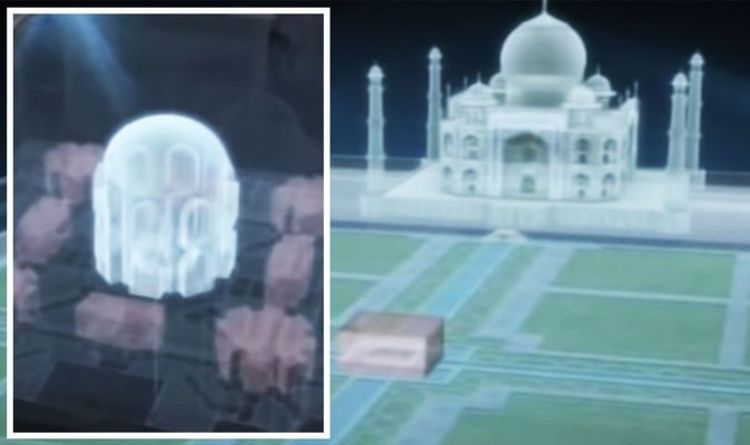The Taj Mahal is India’s most iconic superstructure, hailing from the behemoth Mogul Empire that once ruled almost the entirety of India and parts of Central Asia in the 16th century It has been described as one of the biggest romantic gestures ever offered in history Built by the Mogul emperor Shah Jahan, he commissioned it in honour of his favourite wife and close adviser, Mumtaz Mahal.
Historians claim that a real, “European romance” sparked between them that was unusual for India at the time where arranged marriages were usually conducted in order to pass on dynasties.
The building’s construction began in 1632 and within a few years its outer shell was completed.
Intricate and delicate inscriptions and painstakingly precise artwork was carved into every crevice of the Taj.
During National Geographic‘s in-depth documentary on the building, ‘Secrets of the Taj Mahal’, art historian Ebba Koch dissected the messages Shah Jahan intended to leave.
She explained: “The colour scheme of the Taj Mahal is deeply symbolic.
“The worldly elements and other buildings are all clad in red sandstone.
“White is reserved for the mausoleum.
“This is to be a building of enlightenment and Earthly representation of the heavenly house where Mumtaz Mahal will live for eternity.
“The pure white stands for the spirituality and faith of the person buried here.”
She continued: “The garden is the heart of the Taj Mahal, it’s an Earthly picture of the paradise of the Koran.
“Two paths divide the terrain into four squares.
“The channels along the path representative the rivers of paradise in the Koran.
“Where the channels meet there’s a pool.
“This is symbolic of the celestial pool where the faithful quench their thirst when they arrive in paradise.”
The white marble, perhaps the most important aspect of the Taj, comes from quarries in Makrana in Rajasthan.
So important and effective was this marble that the quarry is still in use today.
The marble was already famous during Shah Jahan’s time, known for its strength and purity, and easy to work into varying shapes and sizes, prized for its fine detail and high polish.
Shah Jahan felt the quarry and marble were so important that he reserved it exclusively for imperial buildings of the Mogul Empire.
The task of transporting the marble from Rajasthan to the Taj, located in Agra, was monumental.
Each piece of marble had to travel nearly 250 miles via elephants and carts.
Such was the size of the Taj that construction consumed colossal amounts of the precious stone.
Architects the world over, including Hadi Teherani, are keen to express how much the marble is to credit for the Taj’s overall beauty.
He explained later on in the documentary: “Of course it’s this white marble that gives it its beauty.
“Its lightness, that sense of floating.
“These are means of expression available to an architect just as words are used by a poet.”
In later life, Shah Jahan fell ill.
Although he fully recovered from his illness, his third son, Aurangzeb, declared him incompetent to rule and placed him under house arrest in Agra Fort.
He lived out the rest of his life in confinement, with a view of his epic creation through a small window, later dying in 1666.






